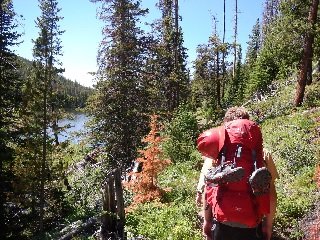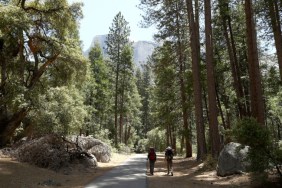 Backpacking is a popular concept, but thru-hiking is lesser-known to most. Where traditional backpacking involves a pattern of hiking, then resting, thru-hiking takes it to the next level and entails a lot more hiking, with much less rest. Now, thru-hiking is not just tons of backpacking; it’s a different sport in itself, and today we’ll explore what goes into this sport.
Backpacking is a popular concept, but thru-hiking is lesser-known to most. Where traditional backpacking involves a pattern of hiking, then resting, thru-hiking takes it to the next level and entails a lot more hiking, with much less rest. Now, thru-hiking is not just tons of backpacking; it’s a different sport in itself, and today we’ll explore what goes into this sport.
Thru-hiking is when you hike a long-distance trail from one end to the other. Sometimes called end-to-end hiking, a thru-hike typically takes months to complete, such as the Appalachian Trail, and involves hiking anywhere from 10 to 30 miles each day. Obviously, to complete such a trail, you’ll need to take some time off work and make sure you have any pressing responsibilities taken care of.
Most thru-hikers carry the bare minimum amount of gear. If you do need additional gear, you can usually buy it along the way, or have it shipped to your next resupply point, most of which are within a week of each other. Travelling with a minimal amount of gear allows you to minimize the strain on your body, but also conserve calories for the long haul.
Because thru-hiking involves several months, you really can’t plan your trip around the weather. For this reason, you’ll need to be comfortable potentially setting up and tearing down your campsite in a variety of situations, ranging from torrid heat to heavy rain.
Also, thru-hiking will require a different diet than what backpackers are used to. Your menu will need to be about efficiency and affordability, so you’ll need to leave the freeze-dried food behind. Don’t ignore your dietary needs, as you’ll be burning thousands of calories each day, but still keep your cooking gear and meal prep simple, and be sure to eat often. Energy bars, GORP, and nuts are ideal snacks, as are packets of tuna fish packed in water, instant oatmeal, tortillas, or meats, such as salami. Keep in mind, too, that it’s also fine to keep a pot and a set of utensils on hand, but any more than that will be too cumbersome. If you do plan on cooking your own meals now and then, stick with meals that can be made in one pot.
The tips outlined today are a good mental jumping off point for anyone considering planning a thru-hike in the future. There’s a lot of preparation—both physical and mental—involved before embarking on such a journey, so be sure to do your research beforehand.








